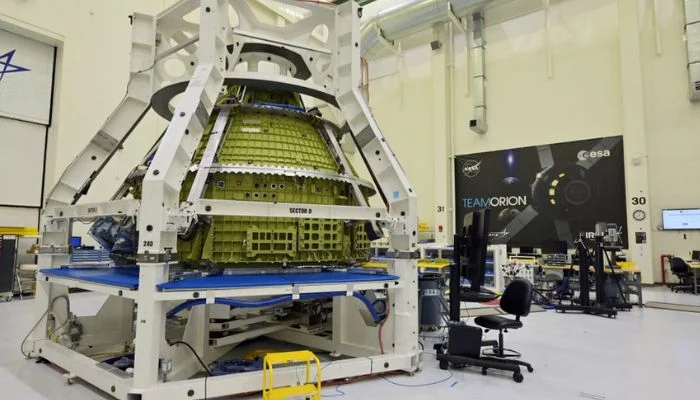
CAPE CANAVERAL, Aug 29(ABC): NASA’s colossal next-generation rocketship was set for its long-awaited debut launch on Monday on an uncrewed, six-week test flight around the moon and back, marking the first mission of the space agency’s Artemis program, successor to Apollo.
The 32-story-tall, two-stage Space Launch System (SLS) rocket and its Orion crew capsule were due for blast-off from the Kennedy Space Center in Cape Canaveral, Florida, during a two-hour launch window opening at 8:33 am EDT (1233 GMT).
The maiden voyage of the SLS-Orion, a mission dubbed Artemis I, is intended to put the 5.75-million-pound vehicle through its paces in a rigorous demonstration flight, pushing its design limits, before NASA deems it reliable enough to carry astronauts.
Billed as the most powerful, complex rocket in the world, the SLS represents the biggest new vertical launch system the US space agency has built since the Saturn V flown during the Apollo moon program of the 1960s and ’70s.
The spacecraft was slowly trundled to historic Launch Pad 39B earlier this month following weeks of final preparations and ground tests. Last week, NASA officials concluded their flight readiness review declaring all systems were “go for launch.”
One issue cited by NASA officials last week as a potential show-stopper for Monday’s launch would be any sign during rocket fueling that a newly repaired hydrogen line fitting had failed to hold.
If the countdown clock is halted for any reason, NASA has set Sept. 2 and Sept. 5 as backup launch dates.
Barring last-minute technical difficulties or unfavourable weather, Monday’s countdown should end with the rocket’s four main R-25 engines and its twin solid-rocket boosters igniting to produce 8.8 million pounds of thrust, about 15% more thrust than produced by the Saturn V, sending the spacecraft streaking skyward.
About 90 minutes after launch, the rocket’s upper stage will thrust Orion out of Earth orbit on course for a 42-day flight that brings it to within 60 miles of the lunar surface before sailing 40,000 miles (64,374 km) beyond the moon and back to Earth. The capsule is expected to splash down in the Pacific on Oct. 10.
























